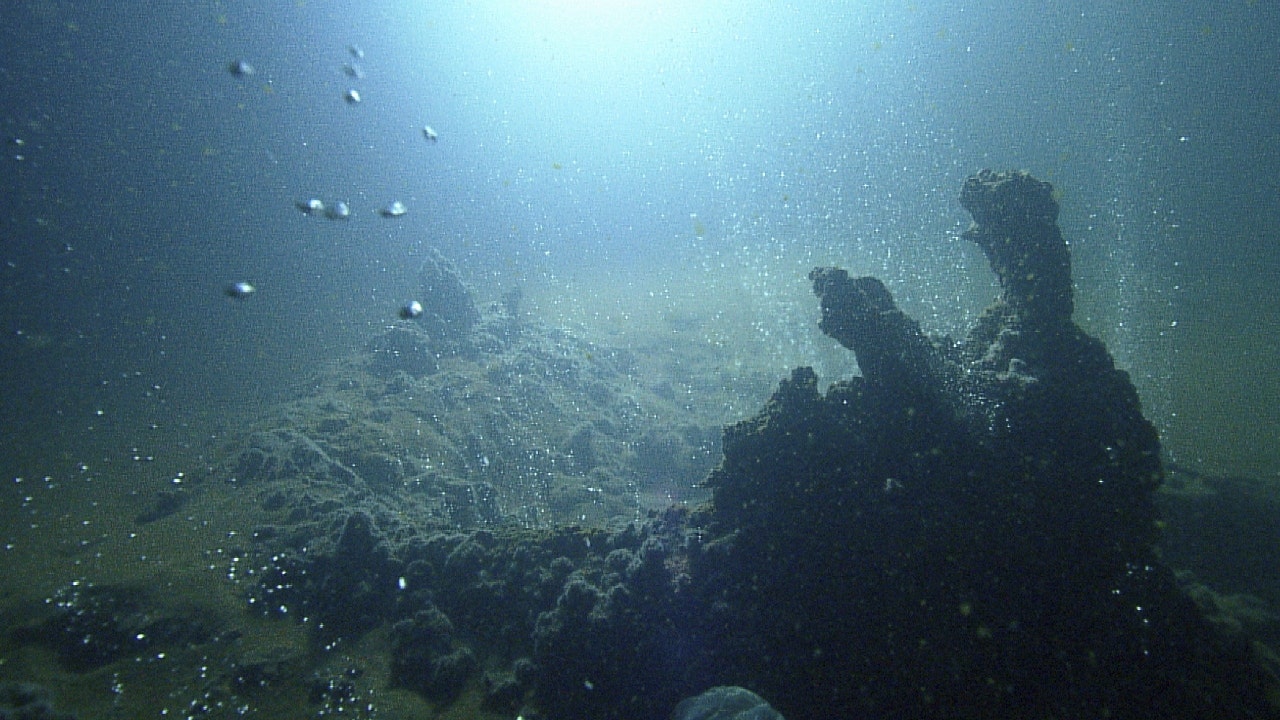A team of scientists has made an astonishing discovery of vibrant animal communities, including tube worms and snails, living in volcanic caves beneath the seafloor. This newly uncovered ecosystem was found during a 30-day research expedition aboard the Schmidt Ocean Institute’s vessel, Falkor (too), exploring an underwater volcano along the East Pacific Rise near Central America.
This volcanic ridge, formed by tectonic plate activity, is known for its hydrothermal vents — openings in the ocean floor where seawater meets hot magma to create deep-sea hot springs. These vents have long been studied for their unique ecosystems, which support life at extreme ocean depths. However, the area beneath these vents had largely remained unexplored until now.
Using a remotely operated vehicle (ROV) named SuBastian, researchers uncovered caves beneath the seafloor, revealing thriving ecosystems in cavities teeming with tube worms up to 1.6 feet long, snails, and other animals. This discovery suggests that the seafloor and the subseafloor ecosystems are interconnected, with life existing in surprising abundance both above and below the ocean floor.
This remarkable ecosystem was first observed in the summer of 2023, and findings were recently published in Nature Communications. Dr. Sabine Gollner, a marine biologist from the Royal Netherlands Institute for Sea Research, expressed her amazement at the discovery: “Animals are able to live beneath hydrothermal vents, and that, to me, is mind-blowing.”
For decades, scientists have studied life around hydrothermal vents, observing how foundational species such as tube worms can colonize new vent sites within a few years, thanks to tectonic shifts that generate new vents. While microbial life beneath the seafloor has been suggested before, this study provides the first direct evidence of large animals inhabiting subterranean caves connected to hydrothermal systems.

The research team, led by Dr. Monika Bright from the University of Vienna, designed an experiment to collect samples from cracks in the seafloor, 8,251 feet below the surface. Using the SuBastian ROV, they drilled into rocks and flipped over chunks of the volcanic crust. What they found was a hidden network of water-filled cavities at around 75 degrees Fahrenheit, supporting tube worms, snails, and chemosynthetic bacteria — organisms that survive by converting chemical reactions into energy rather than relying on sunlight.
This discovery has significant implications for understanding the deep-sea environment. Previously, scientists believed that deep-sea life was mostly restricted to the surface of the seafloor. However, this revelation opens up the possibility that many more ecosystems remain hidden beneath the ocean floor. Marine biologist Alex Rogers, who was not involved in the study, commented that this finding expands our knowledge of vent ecosystems and suggests there may be more life in the deep ocean than previously documented.
The research raises intriguing questions about how extensive these subseafloor ecosystems are and whether they exist beneath all hydrothermal vents. These underground habitats could persist long after vents become inactive, providing potential new homes for other species.
As researchers continue to explore this “underworld” of the seafloor, they caution that extreme care must be taken when studying such fragile ecosystems. During their expedition, the team only lifted six small sections of the seafloor to minimize disturbance. There is concern that larger disturbances, such as deep-sea mining or extensive drilling, could alter the flow of hydrothermal vents, jeopardizing the delicate life forms that depend on them.
The study emphasizes the need to protect not only the surface ecosystems around hydrothermal vents but also the ecosystems that exist below them. Dr. Bright summed up the importance of this discovery, stating, “With this understanding, we also know that we not only need to protect what we see on the surface, but also we should protect what is living below, because it is one important component of this ecosystem.”












